Fujifilm Instax mini 8 Review
Fujifilm Instax mini 8
A fun and easy to use Polaroid-style camera
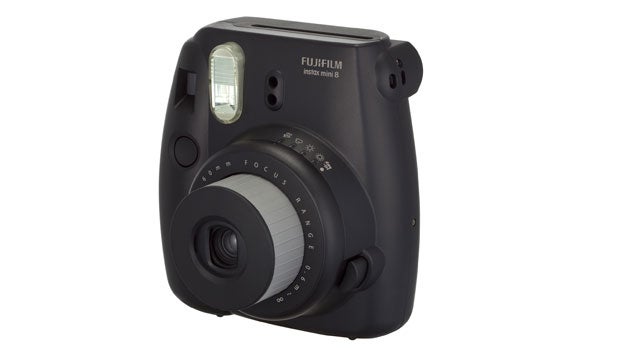
Verdict
Pros
- Comfortable to operate
- Easy to use
- Slimmer than previous Instax models
Cons
- Instax film is expensive
- Mixed image results
- Slow to develop film
Key Specifications
- Review Price: £63.00
- Five mode exposure levels
- Always-on flash
- Takes instant photos
- 0.6m to 2.7m shooting range
- 1/60 seconds Fixed shutter speed
What is the Fujifilm Instax mini 8 camera?
The Fujifilm Instax
mini 8 is a basic point and shoot camera that takes instant photos and
develops them like an old school Polaroid camera. The analogue camera
looks like a toy and and is guaranteed to have serious hipster appeal.
When we live in a world where the likes of Instragram and Hipstamatic reigns supreme, the Instax mini 8 is much more fun way of getting that retro picture look.
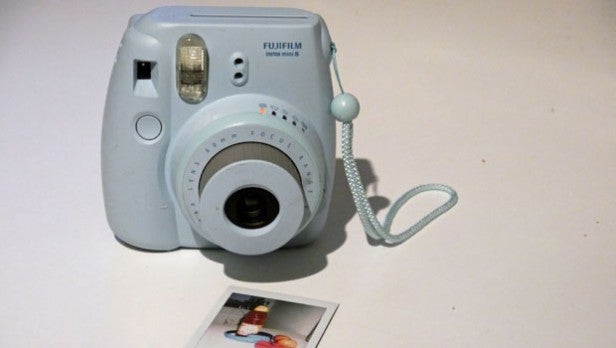
Fujifilm Instax mini 8: Design
Available
in five colours (white, blue, pink, yellow, black), the Instax mini 8
looks like a big kids toy from its matte plastic finish, chunky lens and
big buttons. Despite its hulking size compared to today’s compact cameras, the
Instax mini 8 weighs just 307g and is 10% slimmer than previous Instax
models. It’s not exactly pocket-friendly, but it’s light
enough to throw into a bag without trouble.
Buttons and features are basic. Up front is a button to extend the collapsible
lens and turn on the camera. Around the lens is the brightness adjustment
dial you can twist to choose the different exposure levels. On the hand
grip is the camera trigger with the viewfinder above and the always on
flash just beside it. Around the back is where you’ll find compartments
for film and the battery on the hand grip. Yes it takes batteries, two
AA ones to be precise. This is an analogue camera in every way.
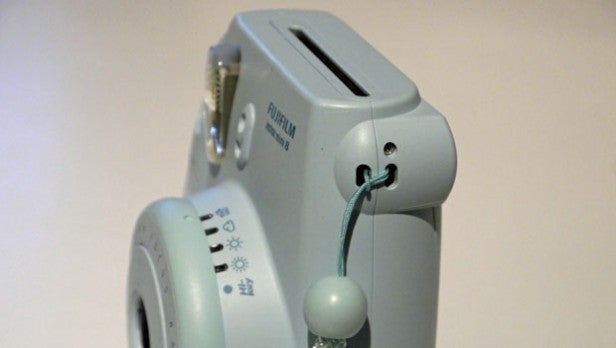
Fujifilm Instax mini 8: Features
Essentially
this is a camera with very basic principles; to help you shoot pictures
with the right level of brightness. There’s five different exposure
levels to choose from; Indoors, Night (F12.7), Cloudy, Shade
(F16), Sunny, Slightly cloudy (F22), Sunny and bright (F32).
Additionall, there’s a new High Key mode to shoot photos with extreme
levels of brightness and a softer atmosphere.
There’s no
autofocus and there’s a shooting range of 0.6m to 2.7m, so you need to
get up close. The flash has a recycle time of 0.2-6 seconds and there is
a fixed shutter speed of 1/60 seconds.
The Instax mini 8 only
uses Fuji Instax film that comes in packs of 10 and measure 62 x 46mm.
That’s about the size of a credit card, so these pictures are on the small size.
Packs can cost around £15 making the mini 8 a costly investment in the long run.
Fujifilm Instax mini 8: Photos
To take photos
you simply need twist the dial to the appropriate exposure level, peer through
the viewfinder and take your shot. It’s as simple as that. Images can
take some time to fully develop and results can be mixed.

There’s
no room for error and if you
get it wrong, exposure levels and colours can look off. Worst of all, you’ve wasted one of those expensive films.
The
lack of autofocus really makes it a challenge to nail the pictures
first time. If you get it right, images are impressively detailed and
produce the soft colour effect to create that aged, Polaroid-style look. Taking photos of people works particularly well, but it takes a little more work to shoot great scenery shots or
simple pictures of objects.
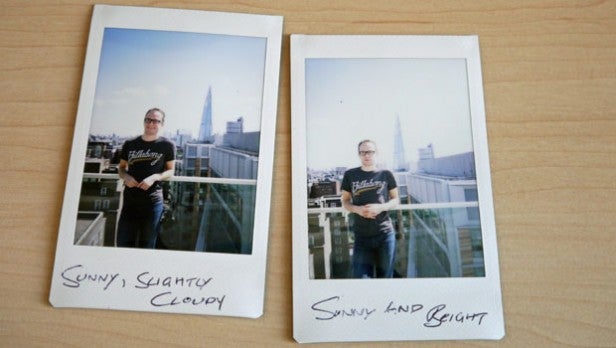
Of the five exposure settings, the Sunny, Slightly Cloud
mode generates the most rewarding pictures. There’s good detail in the foreground and background with a good colour range.
Photos indoors can take a bit more work and it’s here with the lack of focus really shows. The always-on flash can help make up for low-lit conditions, but colours can look too washed out and image clarity is not great.
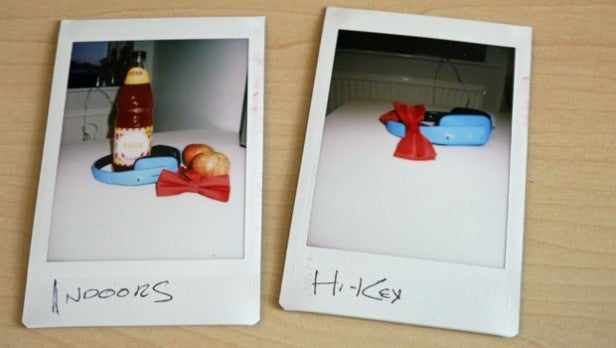
Of course, images are
on the small side, but you do have the big white border at the bottom
so you can sign or leave a message to give it that nice personal touch.
Should I buy the Fujifilm Instax mini 8 camera?
If
you want a break from the megapixels and the luxury of being able to empty
rubbish photos into a recycle bin, the Fujifilm Instax mini 8 camera is a
lot of fun. It’s extremely easy to use, and you can capture some decent photos if you manage to match the right exposure levels with the right surroundings.
It
has its obvious limitations. It runs on batteries and the films work out
very expensive once you factor in how many photos you are likely to
mess up. If you can accept that it’s going to cost you in the long term
and like the idea of having something that is not all about uploading photos
to Facebook, the Instax mini 8 camera is a cool, retro-styled camera that fans
of Polaroids will love.
It could also make a fun, simple way to introduce a child to photography.
Verdict
The Fujifilm Instax
mini 8 is an instant camera that’s easy to use and is a reminder of the
days before digital cameras. The film is expensive, but if you want to
turn the clock back, this is a great retro snapper to do it with.
Read more: top 10 best cameras round-up



